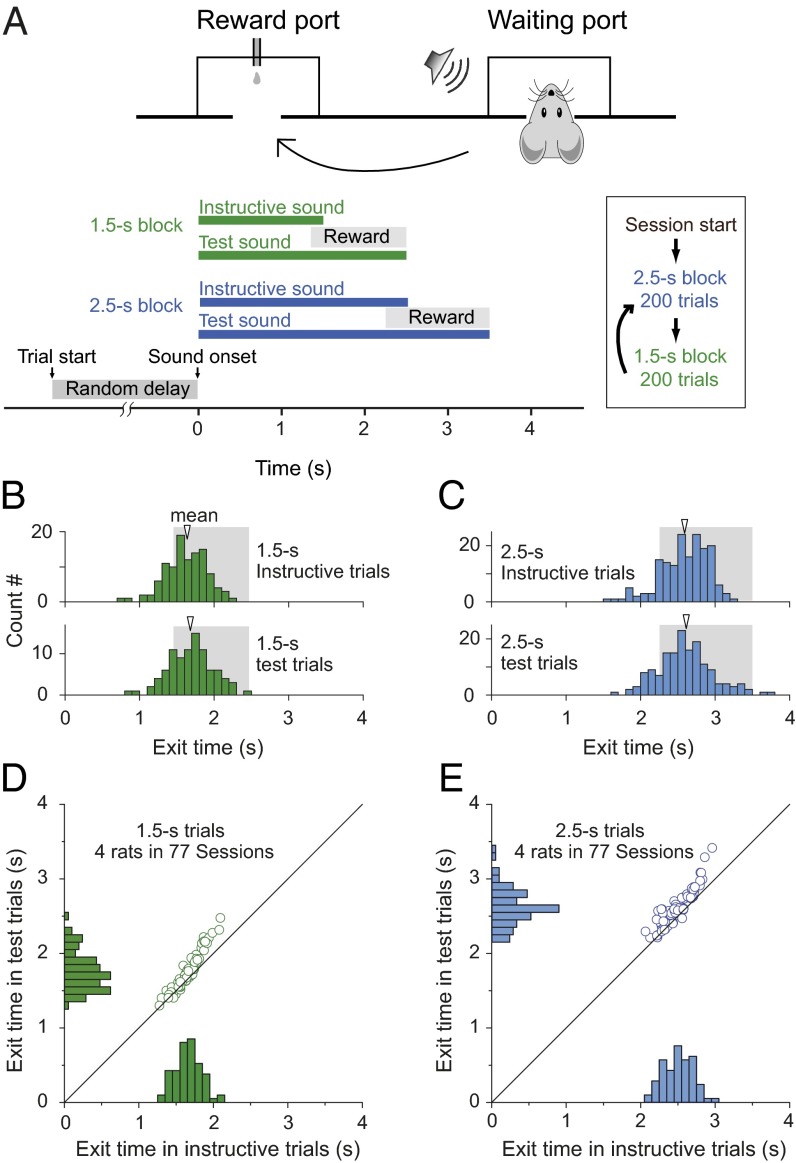Fig. 1.
Two-duration time-estimation task. (A) Schematic diagrams for the behavioral tasks. To initiate a trial, the rat poked its nose into the waiting port and held it at the port for a pseudorandom delay of 0.5–1.5 s before the sound signal was given. In instructive trials, a standard sound (of 1.5- or 2.5-s duration) was played. Rats were rewarded with a small drop of water delivered in the reward port only when they exited from the waiting port within the reward window (from 0.15 or 0.25 s before to 1 s after the sound offset for the 1.5- and 2.5-s tasks, respectively) and then poked into the reward port immediately after exit. During test trials, which were randomly interleaved with instructive trials in each session, a prolonged sound was played and reward was given only if the rat exited the waiting port within the same reward window as in the instructed trials. (B) Performance from one experimental session in 1.5-s instructive trials and test trials. The histogram shows distribution of exit times. Shadow area indicates the reward window. (C) Performance of the same rat in the same experimental session as shown in B in 2.5-s blocks. (D and E) Performance of four rats in the two-interval time-estimation task. Histograms and scatter plots show the distribution of mean exit time from four rats in 77 sessions (13–30 sessions per rat) of performing the two-duration timing task. The bin size in all histograms is 100 ms.

